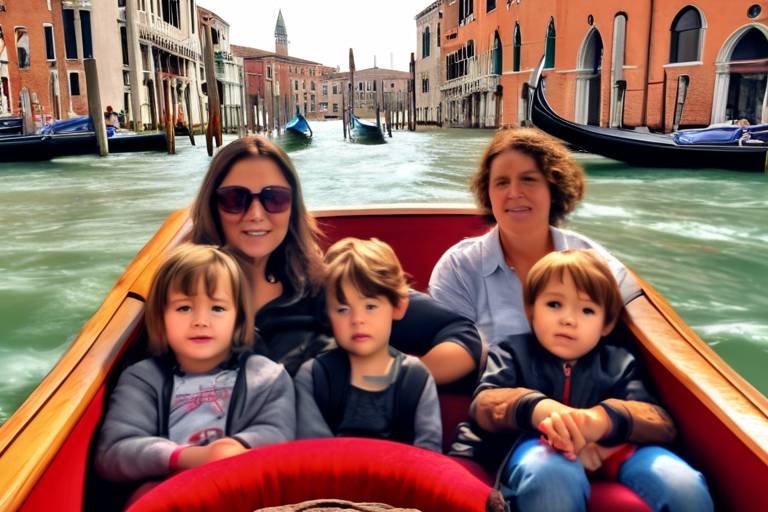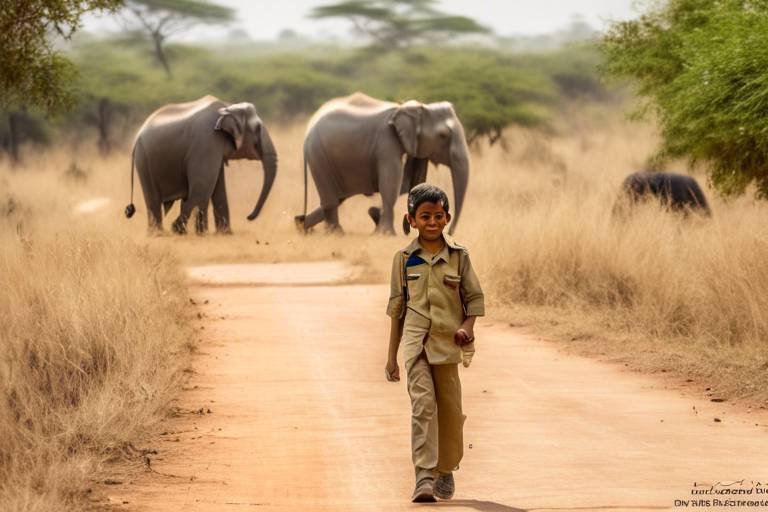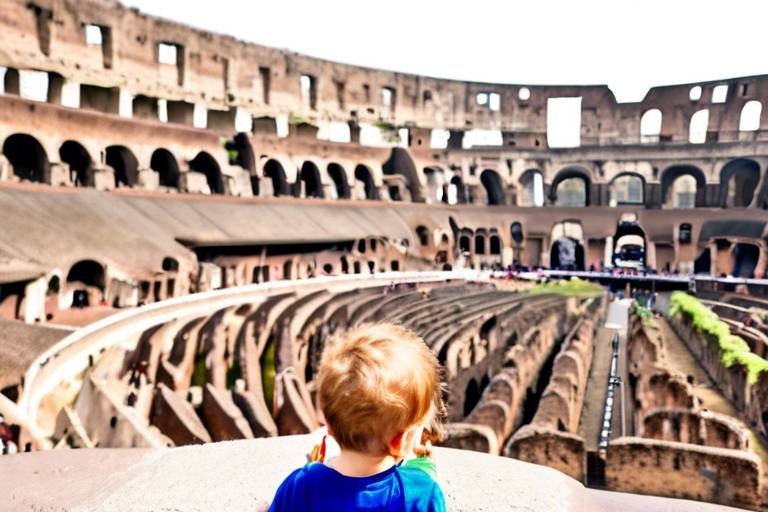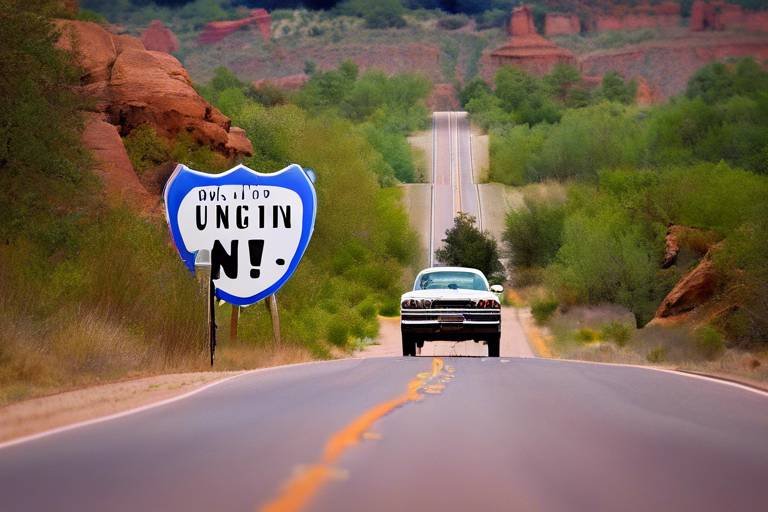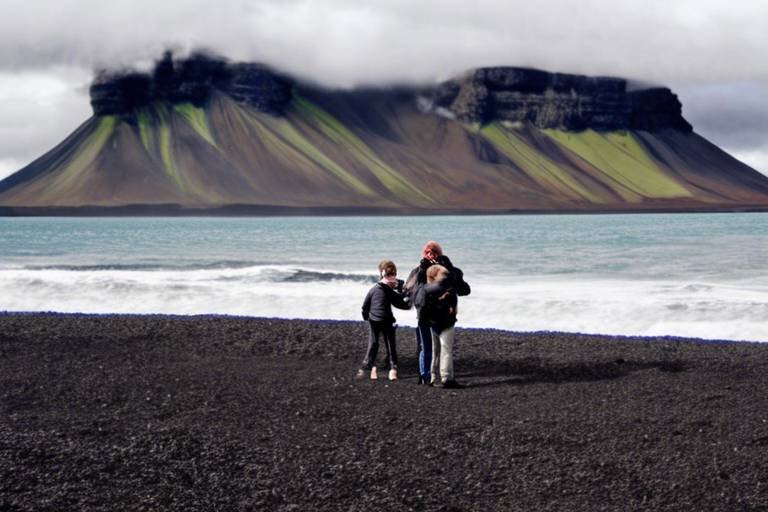Experiencing Peruvian Culture with Your Kids
When it comes to immersing your family in the vibrant world of Peruvian culture, the possibilities are as rich and diverse as the country's landscape. Imagine walking hand-in-hand with your children through bustling markets, where the air is filled with the tantalizing aromas of spices and fresh produce. Picture your kids’ eyes lighting up as they taste their first bite of ceviche, a dish that embodies the essence of Peru's coastal flavors. This journey is not just about food; it’s about creating unforgettable memories that will last a lifetime. From traditional festivals bursting with color to the echoes of ancient music and dance, every experience is an opportunity for learning and connection.
Peru is a country steeped in history, with a tapestry of cultures that have shaped its identity. As you venture into this enchanting land, you'll find that there are countless ways to engage your children in its traditions. Whether it's participating in lively celebrations or exploring ancient ruins, each activity offers a chance to foster curiosity and appreciation for a culture that is both unique and inviting.
What makes this experience even more special is the chance to bond as a family. Imagine the laughter and joy as you try your hand at traditional crafts, or the awe on your kids' faces as they learn about the Incan civilization at iconic sites like Machu Picchu. These moments not only educate but also strengthen family ties, making every step of the journey worthwhile.
So, are you ready to dive into the heart of Peru with your kids? Buckle up for an adventure filled with delicious food, vibrant festivals, and rich history that will captivate your family’s hearts and minds. Let’s explore the many ways to experience this incredible culture together!
- What are some kid-friendly dishes to try in Peru?
Some popular options include lomo saltado (stir-fried beef), aji de gallina (chicken in a spicy sauce), and pisco sour (a non-alcoholic version can be made for kids).
- Are there any specific festivals that are great for families?
Absolutely! Festivals like Inti Raymi and Dia de los Muertos offer vibrant activities that are perfect for children.
- How can we engage with indigenous cultures during our visit?
Visiting local communities and cultural centers will provide an enriching experience where your kids can learn about the Quechua and Aymara cultures.
- What historical sites are recommended for kids?
Machu Picchu and Cusco are must-visit locations where children can explore and learn about the Incan civilization.

Exploring Traditional Peruvian Cuisine
When it comes to experiencing the rich culture of Peru, one of the most delightful avenues is through its traditional cuisine. Imagine the vibrant colors and aromatic spices wafting through the air as you explore bustling local markets with your kids. This is not just a meal; it’s an adventure waiting to unfold! From the refreshing tang of ceviche to the hearty warmth of lomo saltado, Peruvian food is a fusion of flavors influenced by indigenous ingredients and international culinary traditions.
To truly immerse your family in this culinary journey, consider enrolling in a cooking class together. Many local chefs offer family-friendly classes where you can learn to prepare traditional dishes. This hands-on experience not only teaches valuable cooking skills but also allows your children to appreciate the cultural significance behind each ingredient. For example, did you know that potatoes originated in Peru? With over 3,000 varieties, they play a crucial role in many dishes. Imagine your kids' excitement as they peel and chop these colorful tubers, learning about their history along the way!
Another fantastic way to explore Peruvian cuisine is by visiting local markets. Markets like Mercado de Surquillo in Lima are a feast for the senses. Picture walking through aisles filled with fresh produce, vibrant textiles, and the chatter of local vendors. Encourage your children to engage with the vendors, asking questions about the ingredients. This interaction not only enhances their understanding but also builds their confidence in trying new foods. Plus, it’s a great opportunity to sample local snacks, such as anticuchos (grilled skewers) and picarones (sweet potato doughnuts).
Dining out is another essential part of experiencing Peruvian cuisine. Many family-friendly restaurants offer a welcoming atmosphere where you can enjoy authentic dishes. Look for places that serve menu del dia, which are daily specials that often include a starter, main course, and dessert at a reasonable price. This is a fantastic way for your kids to try a variety of dishes without overwhelming their taste buds. Some must-try dishes include:
- Causa Rellena - A layered potato dish filled with tuna or chicken salad.
- Pollo a la Brasa - Rotisserie chicken seasoned with a special blend of spices.
- Arroz con Pollo - A comforting chicken and rice dish cooked with cilantro.
As you explore these culinary delights, don’t forget about the importance of drinks. Peruvian beverages like chicha morada (a sweet purple corn drink) and pisco sour (a classic cocktail) are not only delicious but also steeped in history. While the adults can enjoy the pisco sour, kids will love the refreshing taste of chicha morada, making it a perfect family treat.
In summary, exploring traditional Peruvian cuisine with your kids is an enriching experience that goes beyond just eating. It’s about bonding over shared experiences, discovering new flavors, and learning about the cultural heritage that shapes Peru’s culinary landscape. So, roll up your sleeves, grab your aprons, and dive into this tasty adventure together!
Q: What is ceviche?
A: Ceviche is a popular Peruvian dish made from fresh raw fish marinated in citrus juices, typically lime, and spiced with chili peppers. It's often served with sides like sweet potato and corn.
Q: Are there vegetarian options in Peruvian cuisine?
A: Yes! Peruvian cuisine offers a variety of vegetarian dishes, such as papa a la huancaina (potatoes in a spicy cheese sauce) and quinoa salads.
Q: Can children participate in cooking classes?
A: Absolutely! Many cooking classes are designed to be family-friendly and cater to all ages, making it a fun and educational experience for kids.

Participating in Colorful Festivals
Peru is a land bursting with vibrant colors and rich traditions, and what better way to immerse your children in this culture than by participating in its colorful festivals? These celebrations are not just events; they are a magnificent tapestry of history, music, dance, and community that can create unforgettable memories for your family. Imagine your kids' eyes lighting up as they see the streets adorned with bright decorations, hear the lively sounds of traditional music, and witness the beautiful costumes worn by locals. Festivals like Inti Raymi and Dia de los Muertos provide an excellent opportunity for families to engage with the culture in a fun and meaningful way.
During these festivals, families can enjoy a plethora of activities that are both entertaining and educational. For instance, at Inti Raymi, the Festival of the Sun, children can learn about the ancient Incan traditions through engaging performances and reenactments. It's like stepping back in time, where your kids can witness how the Incas honored the sun god, Inti. This festival is not just a visual feast; it’s an educational adventure that brings history to life in a way that textbooks simply can’t. Imagine your children dancing alongside performers or participating in rituals that have been passed down through generations!
Moreover, many festivals feature kid-friendly activities that are designed to keep young ones engaged. These can include:
- Crafting Stations: Kids can create their own traditional crafts, allowing them to express their creativity while learning about the significance of each item.
- Storytelling Sessions: Local storytellers share tales of Peru's rich history and folklore, captivating the imagination of children and adults alike.
- Games and Competitions: Fun games that are often tied to cultural themes provide a lively atmosphere where families can bond and enjoy friendly competition.
One of the most exciting aspects of participating in these festivals is the opportunity to experience local music and dance. Encourage your kids to join in on traditional dance workshops where they can learn the steps to dances like the Marinera or Huaylash. These dances are not just movements; they tell stories and express emotions that are deeply rooted in Peruvian culture. By participating, your children will not only learn about the rhythms and styles of Peru but will also develop a sense of connection to the community around them.
In essence, participating in Peru's colorful festivals is more than just an activity; it’s an immersive experience that allows families to bond over shared experiences, learn about history, and appreciate the diversity of cultures. So, pack your bags, grab your kids, and get ready to dive into the heart of Peru's vibrant celebrations. Who knows? You might just find that these festivals become a cherished family tradition!
Q: What are some popular festivals in Peru?
A: Some of the most popular festivals include Inti Raymi, Dia de los Muertos, and the Feast of the Virgin of Candelaria. Each offers unique experiences and cultural insights.
Q: Are the festivals suitable for young children?
A: Absolutely! Many festivals feature activities specifically designed for children, making them enjoyable and educational for all ages.
Q: How can we participate in these festivals?
A: Families can join local celebrations, participate in workshops, and engage with the community to fully immerse themselves in the cultural experience.

Understanding the Significance of Inti Raymi
The Inti Raymi, or Festival of the Sun, is one of the most vibrant and significant celebrations in Peru, deeply rooted in the history and traditions of the Incan civilization. This annual festival, held on June 24th, marks the winter solstice in the Southern Hemisphere, a time when the sun is at its lowest point in the sky. For the Incas, the sun was a vital deity, the giver of life, and a symbol of fertility. Thus, Inti Raymi is a heartfelt homage to the sun, celebrating its return and the warmth it brings to the earth.
During this colorful festival, families gather to witness spectacular reenactments that depict ancient rituals, showcasing the rich cultural heritage of the Incas. Imagine your children being transported back in time as they watch performers dressed in traditional garb, adorned with intricate costumes and vibrant colors. The air is filled with the sounds of lively music, echoing the rhythm of ancient drums and flutes, creating an atmosphere that is both enchanting and educational.
Understanding the significance of Inti Raymi goes beyond just enjoying the festivities; it offers an incredible opportunity for children to learn about Incan history and the importance of nature in their ancestors' lives. Here are some key aspects that make this festival so special:
- Cultural Heritage: Inti Raymi is a living testament to the Incan civilization, allowing participants to connect with their roots and appreciate the traditions passed down through generations.
- Community Spirit: The festival fosters a sense of unity among families and communities, as everyone comes together to celebrate and honor their shared history.
- Educational Value: Engaging performances and reenactments provide a fun and interactive way for children to learn about ancient customs, rituals, and the significance of the sun in Incan society.
As your family participates in Inti Raymi, encourage your kids to ask questions and engage with the performers. This interaction can spark curiosity and lead to meaningful conversations about the history and culture of Peru. By immersing themselves in such a rich tradition, children not only gain knowledge but also develop a deeper appreciation for the diverse cultures that make up our world.
In summary, the Inti Raymi festival is not just a celebration; it is an educational journey that connects families to the past while fostering a sense of community and cultural pride. So, if you have the chance to experience this spectacular event with your children, seize it! You will create lasting memories and instill a love for learning about different cultures in your little ones.

Activities for Kids During Festivals
When it comes to immersing your children in the vibrant culture of Peru, festivals are a treasure trove of experiences that promise excitement and learning. These celebrations are not just about the music and dance; they offer a plethora of activities specifically designed for kids that can turn a simple day into a memorable adventure. Imagine your little ones adorned in colorful costumes, their faces painted, and their hearts racing with joy as they participate in various festival activities!
One of the highlights of these festivals is the opportunity for children to engage in traditional crafts. Many festivals set up craft stations where kids can create their own masks, paint pottery, or even learn to weave using traditional techniques. This hands-on experience not only sparks their creativity but also teaches them about the cultural significance behind each craft. Just think of the pride they’ll feel when they present their handmade treasures!
Furthermore, festivals often include interactive games that reflect traditional Peruvian culture. For example, children can participate in games like “Pachamama’s Treasure Hunt”, where they follow clues related to Andean mythology, or join in on traditional dances that encourage them to move and groove to lively music. These activities are not only fun but also serve as a fantastic way to learn about the rich history and traditions of Peru while making new friends.
Storytelling is another captivating activity that many festivals incorporate. Imagine gathering around a local storyteller who shares tales of ancient Incan gods or the heroic deeds of legendary figures. This not only entertains but also educates children about their heritage in a way that feels magical and engaging. It’s a wonderful opportunity for kids to ask questions and learn about the narratives that shape Peruvian culture.
To top it all off, many festivals host parades where children can participate as well. They might dress up in traditional costumes and join the procession, waving to onlookers and feeling like the stars of the show. This experience is exhilarating and gives them a sense of belonging to something much larger than themselves—a community celebrating its history, culture, and traditions together.
In summary, the festivals in Peru are a vibrant playground for children, filled with activities that foster creativity, learning, and a deep appreciation for the rich cultural tapestry of the country. Whether it’s through crafts, games, storytelling, or parades, your kids will have the chance to create cherished memories that will last a lifetime. So, pack your bags and get ready for a cultural adventure that your family will talk about for years to come!
- What are some popular festivals in Peru for families?
Some of the most popular festivals include Inti Raymi, Dia de los Muertos, and the Feast of the Virgen de la Candelaria, each offering unique experiences for families.
- Are festival activities suitable for all ages?
Yes! Most festivals in Peru offer activities that cater to all age groups, ensuring that everyone in the family can participate and have fun.
- Can we find food options at these festivals?
Absolutely! Festivals often feature a variety of local food stalls where families can try traditional dishes, making it a great opportunity to explore Peruvian cuisine.

Experiencing Local Music and Dance
When it comes to immersing your kids in the vibrant culture of Peru, local music and dance are two of the most exciting avenues to explore. Imagine the rhythm of traditional instruments like the charango and pan flute filling the air, while colorful dancers in traditional attire swirl and twirl, telling stories through their movements. This is not just entertainment; it's a gateway to understanding the heart and soul of Peruvian culture!
One of the best ways to introduce your children to these artistic expressions is by participating in workshops. Many local cultural centers offer classes where families can learn traditional dances such as the Marinera or the Huaylas. These dances are not only fun, but they also teach children about the history and significance behind each movement. Plus, what better way to bond as a family than by dancing together? You might even find yourself laughing at each other's missteps—after all, it’s all about having fun!
In addition to workshops, consider attending local festivals where music and dance take center stage. Events like the Fiesta de la Candelaria or Inti Raymi feature not just performances but also opportunities for kids to join in the festivities. They can learn to play instruments, participate in group dances, or even dress up in traditional costumes. These experiences are invaluable as they allow children to engage directly with the culture, making it a living, breathing part of their memories.
To give you an idea of what to expect, here’s a quick overview of some traditional Peruvian music and dance forms:
| Dance | Description | Instruments |
|---|---|---|
| Marinera | A romantic dance that symbolizes courtship, often performed with handkerchiefs. | Guitar, Cajón, Pan Flute |
| Huaylas | A lively dance from the Andean region, characterized by energetic movements. | Charango, Flute |
| Festejo | A joyful Afro-Peruvian dance that celebrates happiness and community. | Cajón, Guitar |
Encouraging your kids to engage with local music and dance is not only about having fun; it also fosters a deeper appreciation for cultural diversity. It's like planting a seed of curiosity and understanding that can grow throughout their lives. So, whether you’re tapping your feet at a local festival or attempting to master a new dance step in a workshop, remember that these moments are priceless. They are the stories you’ll share for years to come, filled with laughter, rhythm, and the vibrant spirit of Peru!
- What is the best age for kids to start learning traditional Peruvian dance? Kids can start as young as 5 or 6 years old, as many workshops are designed to be family-friendly.
- Are there any specific festivals that are particularly kid-friendly? Yes! Festivals like Inti Raymi and Fiesta de la Candelaria often have dedicated activities for children.
- What should we wear to a dance workshop? Comfortable clothing and shoes that allow for movement are recommended. Traditional attire can be worn during festivals!

Exploring Indigenous Cultures
When it comes to experiencing the vibrant tapestry of Peruvian culture, diving into the rich heritage of its indigenous peoples is a must. Peru is home to numerous indigenous groups, with the Quechua and Aymara being two of the most prominent. These communities offer a unique glimpse into a world where traditions have been passed down through generations, and where the connection to the land runs deep. Imagine walking through a village where the air is filled with the sounds of traditional music, and the streets are alive with colorful textiles that tell stories of their own. This is not just a visit; it’s an adventure that can ignite your children's curiosity and appreciation for diverse cultures.
Visiting local communities can be a transformative experience for your family. Many of these communities welcome visitors with open arms, eager to share their customs and way of life. Engaging with local artisans can provide insights into traditional crafts, such as weaving and pottery. For instance, in the Sacred Valley, you might find yourself watching a skilled weaver create intricate patterns that have been used for centuries. This hands-on experience allows children to see the beauty in tradition and the importance of preserving cultural heritage.
Moreover, participating in local festivals can be an exhilarating way to immerse your family in indigenous culture. Events like the Qoyllur Rit'i Festival, which honors the Andean mountain spirits, are filled with vibrant clothing, traditional music, and dance. Your kids will be captivated by the colorful costumes and the rhythmic beats that fill the air. It's a celebration of life, nature, and community that will leave a lasting impression on their young minds.
To further enrich your experience, consider visiting cultural centers that offer educational programs about the history and traditions of these indigenous groups. Many centers provide workshops where children can learn about traditional farming techniques, music, and storytelling. These activities not only entertain but also educate, creating a bridge between the past and the present. Imagine your child learning to play a traditional Andean instrument or helping to plant native crops; these experiences foster a sense of responsibility and respect for different cultures.
In addition to hands-on experiences, sharing stories and legends from indigenous cultures can be a magical way to connect with your kids. Gather around a fire or in a cozy space and share tales that highlight the values and beliefs of these communities. Stories about the Pachamama (Mother Earth) and the importance of nature can teach your children about sustainability and respect for the environment. It’s a beautiful way to instill values that resonate with the essence of Peruvian culture.
In summary, exploring the indigenous cultures of Peru with your family is not just about observation; it’s about participation and connection. By engaging with the Quechua and Aymara communities, you create memories that will last a lifetime while instilling a sense of appreciation for the world's rich diversity in your children. So pack your bags, grab the kids, and get ready for an adventure that promises to be as educational as it is fun!
- What are the main indigenous groups in Peru?
The main indigenous groups include the Quechua and Aymara, among others, each with their unique traditions and languages. - How can we respectfully engage with indigenous communities?
Always ask for permission before taking photos, participate in local customs, and support their crafts by purchasing directly from artisans. - Are there any specific festivals we should attend?
Festivals like Inti Raymi and Qoyllur Rit'i are vibrant celebrations that offer insight into indigenous culture and are family-friendly. - What activities are suitable for children?
Look for workshops that involve crafts, music, or storytelling, which can be both fun and educational for kids.

Visiting Historical Sites
When it comes to immersing your kids in the rich history of Peru, there’s no better way than visiting its remarkable historical sites. Imagine standing at the foot of the majestic Machu Picchu, where the ancient Incas once thrived. It's not just a breathtaking view; it's a doorway into a world that has so much to teach us. As you and your children explore these iconic landmarks, you're not merely sightseeing; you're embarking on an adventure that intertwines education with excitement.
One of the most fascinating aspects of visiting historical sites is the stories they hold. For instance, Cusco, the former capital of the Inca Empire, is a treasure trove of history. Walking through its cobblestone streets, your family can marvel at the stunning architecture that blends Incan and colonial Spanish influences. Kids will love discovering how the Incas built structures that have stood the test of time, even after centuries of earthquakes!
To make the experience even more engaging for your children, consider joining guided tours that cater specifically to families. Many of these tours offer interactive elements, such as:
- Hands-on activities where kids can try their hand at traditional Incan crafts.
- Storytelling sessions that bring the history of the Incas to life.
- Opportunities to dress in traditional costumes for memorable photos.
Moreover, visiting historical sites like Sacsayhuamán or the Sacred Valley provides a chance for your kids to learn about the Incan way of life, from their agricultural practices to their spiritual beliefs. The awe-inspiring landscapes and the sheer scale of these sites will leave your children with a sense of wonder and curiosity about the past.
For families looking to delve deeper, many historical sites also offer educational programs focused on archaeology and history. These programs can include workshops, interactive exhibits, and even archaeological digs, allowing kids to engage directly with the past. It’s like stepping into a time machine where they can learn while having fun!
In addition to enriching your children's knowledge, visiting these historical sites creates lasting memories. Picture this: your family sitting on a sunlit terrace overlooking the ruins of Machu Picchu, sharing stories about the Incas while enjoying a picnic. This not only strengthens family bonds but also instills a love for history and culture in your kids.
As you plan your trip, be sure to check for any special events or festivals happening at these sites. Often, you might find reenactments or cultural performances that can further enhance your family's experience. After all, what better way to learn about history than through vibrant celebrations that bring it to life?
- What are the best historical sites to visit in Peru with kids?
Some of the top sites include Machu Picchu, Cusco, and the Sacred Valley. Each offers unique experiences that cater to families. - Are there guided tours available for families?
Yes! Many historical sites offer family-friendly guided tours that include interactive activities and storytelling. - How can we make the visit more engaging for our children?
Consider participating in hands-on workshops, dressing in traditional costumes, and exploring through scavenger hunts.

Engaging in Educational Tours
When it comes to immersing your children in the captivating history of Peru, educational tours are a fantastic way to do just that. Imagine walking through the ancient ruins of Machu Picchu or exploring the cobblestone streets of Cusco, where every corner tells a story. These tours often include knowledgeable guides who can bring the past to life with engaging narratives and fascinating anecdotes. Your kids will not only see the breathtaking sites but will also gain a deeper understanding of the Incan civilization and its remarkable achievements.
One of the best aspects of educational tours is the interactive elements they often incorporate. Many tours are designed to be hands-on, allowing children to participate in activities that enhance their learning experience. For example, at some historical sites, kids can engage in reenactments of ancient rituals or even try their hand at traditional crafts. This level of involvement makes history feel real and relevant, transforming passive observation into active participation.
Additionally, some tours offer opportunities to explore the local flora and fauna, connecting your children with the natural world that the Incas revered. Imagine them learning about the sacred plants used in traditional medicine or discovering the animals that played significant roles in Incan mythology. These experiences can spark a lifelong interest in history and nature, making the educational tour not just a fun outing but a transformative experience for the whole family.
For families looking to tailor their experiences, many tour companies provide customizable options. This means you can choose tours that fit your children's interests, whether they're fascinated by archaeology, architecture, or even local legends. Here’s a quick rundown of some popular educational tour themes:
| Tour Theme | Description |
|---|---|
| Archaeological Tours | Explore ancient ruins and learn about the Inca civilization's architectural marvels. |
| Cultural Immersion | Engage with local communities and learn about their traditions and daily life. |
| Nature Tours | Discover Peru's diverse ecosystems and the importance of conservation. |
To make the most of these tours, consider the age and interests of your children. Some tours may be more suited for older kids who can grasp complex historical concepts, while others are perfect for younger children who thrive on hands-on activities. It's all about finding the right balance that keeps everyone engaged and excited.
So, as you plan your Peruvian adventure, remember that educational tours can be a gateway to understanding the rich tapestry of Peru's history and culture. They provide not just knowledge but also cherished family memories that you will all treasure for years to come.
- What age group is best suited for educational tours in Peru?
While many tours cater to a wide range of ages, those for younger kids often focus on interactive activities, while older children can engage with more complex historical themes. - Are educational tours expensive?
Prices can vary widely based on the tour length, activities included, and the provider. It's best to compare options and choose one that fits your budget. - How can I ensure my kids stay engaged during the tour?
Choose tours that offer hands-on activities, storytelling, and opportunities for questions. Engaging guides can also make a significant difference!

Learning Through Art and Crafts
One of the most enriching ways to immerse your children in Peruvian culture is through art and crafts. These activities not only spark creativity but also provide a tangible connection to the rich traditions and history of Peru. Imagine your kids getting their hands dirty with clay, molding it into beautiful pottery, or weaving colorful textiles that tell stories of ancient civilizations. These experiences can be incredibly rewarding and educational, allowing children to understand the significance of these art forms in a cultural context.
In Peru, traditional crafts such as pottery, weaving, and textile arts have been passed down through generations, each piece telling a story of the people and their heritage. For instance, when your kids participate in a pottery workshop, they will not only learn techniques used by artisans but also hear about the history behind each design and symbol. This hands-on approach gives them insight into how art is intertwined with cultural identity.
Many cultural centers and local communities offer workshops specifically designed for families. These workshops often include:
- Pottery Making: Kids can shape their own pots and learn about the materials used by ancient civilizations.
- Textile Weaving: Through guided sessions, children can create their own woven pieces, understanding the significance of colors and patterns.
- Painting and Drawing: Inspired by Peruvian landscapes and folklore, kids can express themselves through art, using traditional techniques.
Moreover, engaging in these artistic endeavors fosters not just creativity but also teamwork and communication skills. As children work alongside local artisans and other kids, they learn to share ideas, collaborate on projects, and appreciate different perspectives. It's a wonderful way to build friendships while deepening their understanding of Peru's vibrant culture.
To further enrich the experience, consider visiting local markets where artisans sell their crafts. This not only supports the local economy but also allows your children to see the beauty and craftsmanship of Peruvian art firsthand. They can ask questions and even try their hand at some of the techniques they learned in workshops. It’s a fantastic way to instill a sense of appreciation for cultural diversity and the arts.
As you and your family embark on this artistic journey, remember that the goal is not just to create beautiful objects, but to foster a love for learning and exploration. Each brushstroke, weave, and clay shape is a step towards understanding the rich tapestry of Peruvian culture, making it an unforgettable adventure for your kids.
| Question | Answer |
|---|---|
| What types of crafts can my kids learn in Peru? | Kids can learn pottery, weaving, painting, and various other traditional crafts during workshops. |
| Are workshops available for all age groups? | Yes, many workshops are designed to accommodate different age groups, making them family-friendly. |
| How can we find local artisans and workshops? | Visiting cultural centers, local markets, or tourist information centers can help you find available workshops. |
| Is it expensive to participate in these activities? | Costs vary, but many workshops are reasonably priced and offer great value for the experience. |
Frequently Asked Questions
- What are some traditional Peruvian dishes my kids can try?
When it comes to introducing your kids to Peruvian cuisine, there are plenty of kid-friendly options! Dishes like lomo saltado (stir-fried beef with rice and fries) and aji de gallina (shredded chicken in a creamy sauce) are flavorful yet mild. Don't forget to let them taste ceviche, a classic dish made with fresh fish, lime, and onions, but be mindful of their tolerance for citrus!
- Are there any festivals suitable for children?
Absolutely! Festivals like Inti Raymi and Dia de los Muertos are not only vibrant but also family-friendly. These celebrations often include colorful parades, music, and activities designed specifically for kids, such as crafts and storytelling sessions, making them perfect for a fun, educational experience.
- How can my kids learn about indigenous cultures in Peru?
Visiting local communities and cultural centers is a fantastic way for your children to learn about the rich indigenous cultures like the Quechua and Aymara. Many places offer interactive experiences, such as traditional dance performances or craft workshops, that engage kids and help them appreciate the cultural heritage of Peru.
- What historical sites should I visit with my children?
Iconic sites like Machu Picchu and Cusco are must-visits! These locations not only provide breathtaking views but also rich history. Many tours are tailored for families, making them interactive and fun, so your kids can grasp the significance of the Incan civilization while exploring.
- Are there any hands-on activities for kids related to Peruvian culture?
Yes! Engaging in traditional Peruvian art and crafts such as pottery and weaving can be both fun and educational. Many workshops are available where kids can create their own pieces, allowing them to connect with the culture while expressing their creativity!


